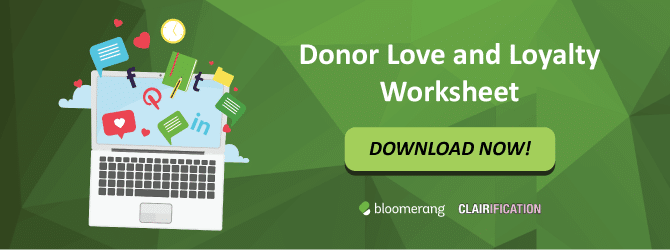
Considering doing a donor cultivation event? Smart decision! According to fundraising expert and author Penelope Burk, 67% of respondents attending a donor cultivation event credited it as the reason why they made their gift.
The number one thing donors want is to know they make a difference. Donor cultivation events allow you donors to experience firsthand how they can make a difference. They also offer a fun, relaxed, social setting for you (and your board) to get to know your donors free of intimidation and formalities.
Why should you do a donor cultivation event?
- Donors get to see your need firsthand
- You get to mingle with donors and ask great discovery questions
- Donors and prospects can experience your mission up close in an immersive way
- They can drive upgrades and retention
- They can bring in new prospects
The two most important things to consider when planning an event are: 1) what would appeal to your audience and 2) how can you make it as immersive an experience as possible?
Immerse your donors in the action so they can experience your work. According to fundraising expert and author Adrian Sargeant, “The more immersive the experience, the more likely the impression can result in a donor relationship.”
Even on a shoestring budget you can pull off a donor cultivation event that delights donors and inspires larger and more loyal giving!
5 questions to ask yourself before you do a donor cultivation event:
- What are you already doing with clients that would be meaningful for your donors to see?
- What high value “VIP” volunteer opportunities can you create to allow donors to feel a part of your mission in a fun, engaging way?
- Who is your audience: major donors, mid-level donors, prospects, board members, media, stakeholders, etc.?
- What would appeal the most to your audience?
- What is your follow up plan for everyone who attended?
Planning Your Event: The Who, What & How of Donor Cultivation Events
Step 1: Who
The most Important part of your activity is deeply understanding your audience.
Start with a list of mid-level and major donors needing cultivation. Think about what is in it for them. What would get them to leave their busy day at work? Consider an event they’d bring their coworkers to where they could do team building and learn about your mission at the same time. Take plenty of photos and send them a blurb about what they did so they can share it on their company’s intranet and even brag about to their employer.
If you are planning an event at night or on the weekend is there a way their family could experience it with them? A lot of your donors might be thrilled to get their children introduced to philanthropy and this could be a great chance to do that. Keep in mind that mingling with other donors is likely a big draw for them so consider your guest list appropriately. You might consider inviting an elected official, an entrepreneur, professor or local media personality. You might even include that high profile person’s name in your invitation copy as a draw for other potential guests.
Step 2: What
What kind of immersive experience with your programs would wow your donors?
How can you put your donor in the middle of the action experiencing your programs? Can you recreate the sights, sounds and smells of your work? Donors could experience an element of your program(s) or be engaged with a volunteer task.
If you opt for a volunteer task, prioritize the impression the experience will leave on your donor rather than the immediate benefit to your organization. In other words, you don’t necessarily want an activity that will deliver value to the organization today (like stuffing envelopes or moving boxes). You’re producing an experience for your donors, an opportunity to see and feel your mission in all its glory, whether it’s fun and entertaining, eye opening, or emotionally gripping. For example, an organization empowering girls in science, technology, engineering and math hosted a “Come Fly a Drone” event for donor cultivation.
Still stumped? Another option for an activity is to leverage the expertise of the audience you assemble. You probably ask your donors often for gifts, but how often do you ask for their opinions or advice? One nonprofit assembled a “dream team” of local technology leaders, who were tasked with envisioning a new computer lab. They were asked to use their knowledge of industry trends to imagine what the school might need 3-5 years into the future. Asking potential donors to contribute their unique expertise can make them feel needed and appreciated, and in turn more likely to give. Plus, it might save you exponentially when you consider paying someone of their caliber for such consulting services.
Step 3: How
Begin planning your event at least six to twelve weeks in advance.
By far, the best way to invite your intended audience is through personal connections. Draft a letter or email that your board members and other dedicated fans can send to targeted individuals and provide talking points for a phone script. Ask for an RSVP via email, phone, or online form, and confirm via email, including a map and parking plus in-case of-rain instructions. Call with a reminder two to three days before the event. Assign one staff or board member for every two to five donors or prospects. Ensure you are prepared last-minute questions on the day.
Don’t forget the follow up!
You invested a lot to produce this experience. Leverage it with great follow up! Call your guests to hear what they thought. What did they like the most? How could it be improved? How/would they describe [the activity] to family or friends? Who else who might be interested in coming to an event like this?
Got a successful donor cultivation event story to share? Drop it in the comments!
The post How To Do A Donor Cultivation Event appeared first on Bloomerang.

